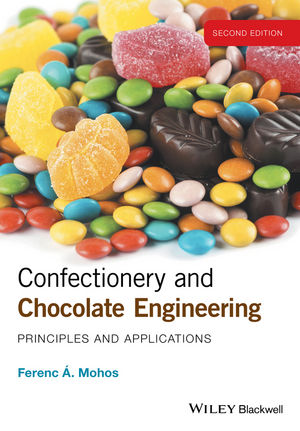Aimed at supporting sugar reduction professionals, Givaudan recently released Season 2 of its Sweet Smart Masterclass, which covers the complex science of sweetness and valuable insights for industry players.
We spoke to Guillaume Blancher, global product manager sweet taste at Givaudan Taste & Wellbeing, about how industry players can create the right flavors for reduced-sugar solutions and sweeteners.
Article by: Guillaume Blancher
Consumer attitudes are evolving regarding sugar—they want delicious products with less sugar content. However, crafting an authentic taste experience in sugar-reduced products demands an expert touch. There are various considerations for sector professionals.
The "sugar shift"
There is a marked consumer "sugar shift" today. The International Food Information Council says that most U.S. consumers are looking to limit or avoid sugar altogether. Health & wellness was a core focus in GlobalData’s 2022 Consumer Survey Insights[1] with consumers becoming more health conscious. Further to this, Givaudan’s research shows that 54% of shoppers say that reducing sugar has become more important in their diet over the last year. Over a quarter believe bland, healthy food presents an obstacle to lifestyle changes.
Producers face the massive challenge of creating products with less sugar, but just as much natural flavor—at scale. When the sugar is reduced—or removed—the sophistication of the sweet taste can also diminish.
Establishing the right flavors for sweeteners
Sugar reduction is a scientific domain that's extraordinarily complex. Manufacturers need help navigating the landscape to meet requirements and provide the full taste experience for the consumer.
Changing consumer perception of high-intensity sweeteners is a particularly crucial point to consider. There is a positive outlook around sweeteners such as honey, maple syrup, and fruit juices. On the other hand, consumers are increasingly hesitant when it comes to artificial sweeteners, such as aspartame, cyclamate, acesulfame K, saccharin, and sucralose. This trend has led to the development of new natural, zero-calorie sweeteners including new stevia derivatives, more expensive monk fruit and allulose options, and even new sweet proteins, such as brazzein. There is a great demand from consumers for reduced-sugar products with more natural sweeteners.
Sweetness science: masking and rebalancing
Industry producers need a deep knowledge of the chemistry of sweet compounds, sweetness perception, and taste receptors when creating sweeteners. High-intensity sweeteners do not exactly match the taste of sugar and experience in sweetness modulation and masking is required.
Brands need sugar and sweetness satisfaction expertise to innovate and deliver high-grade flavor formulas. It is crucial to understand the emphasis on masking and rebalancing processes when creating the best reduced-sugar products.
An authentic taste experience
Recreating an authentic taste experience with reduced sugar is a complex endeavor. It involves overcoming various challenges associated with alternative sweeteners, such as aftertaste and bitterness, which can be undesirable for consumers. Sugar reduction can affect different applications in diverse ways, for example:
- When reducing sugar in chocolate, the texture, sweetness intensity, and taste quality are impacted. Bulking agents such as polyols (like erythritol) or fibers (like inulin) are typically used to maintain the structural properties. Polyols bring sweetness, although they come with a taste baggage and can have a negative perception for certain consumers. Fibers don't bring a lot of sweetness, but they are usually perceived as healthier by consumers. Neither polyols or fibers can recreate the full sensory experience of sugar.
- In baked goods, sugar reduction can lead to inferior mouthfeel and may also have an impact on texture, color and shelf life. Bulking to replace sugar is also needed.
Manufacturers have the issue of fully understanding which solutions are best suited to eliminate the product off-notes and imbalances when reducing sugar. It’s also a concern that customers might change products if they are unhappy with the reformulated taste experience. New digital technologies, artificial intelligence (AI), and science-based product profiling are paving the way for how we formulate products, providing many new and exciting possibilities for sugar reduction.
Givaudan’s Sweet Smart Masterclass series
With season 2 launched earlier this year, Givaudan’s Sweet Smart Masterclass series (seasons 1 and 2) can benefit sector professionals. It tackles the complex topic of sugar reduction: the science behind it, reformulation, and sweetness. Topics covered include:
- Sweetness perception: By having a more in-depth understanding of sweetness perception in the mouth during food consumption, it’s possible to recognize the elements of a product that are most likely to be impacted by sugar reduction (Episode 6).
- Sensory tools: How manufacturers can use sensory tools to analyze how sugar perceptions can vary from sugar alternative perceptions (Episode 5).
- Rebuilding the full taste experience: Identifying potential changes in product taste and utilizing an array of flavors to reinvent a product into one with less sugar (Episode 4).
The free masterclass combines Givaudan’s sugar reduction expertise into engaging informational videos. Industry players can get a better understanding of key sugar reduction challenges and predict product success during development.
[1] GlobalData Consumer Survey Insights, Mega-Trend Tracking – Understanding Shifts in TrendSights Influence. GDCS0012SI. Published: November 11, 2022
Related: Givaudan, MISTA, Bühler celebrate opening of new extrusion hub at MISTA in San Francisco










